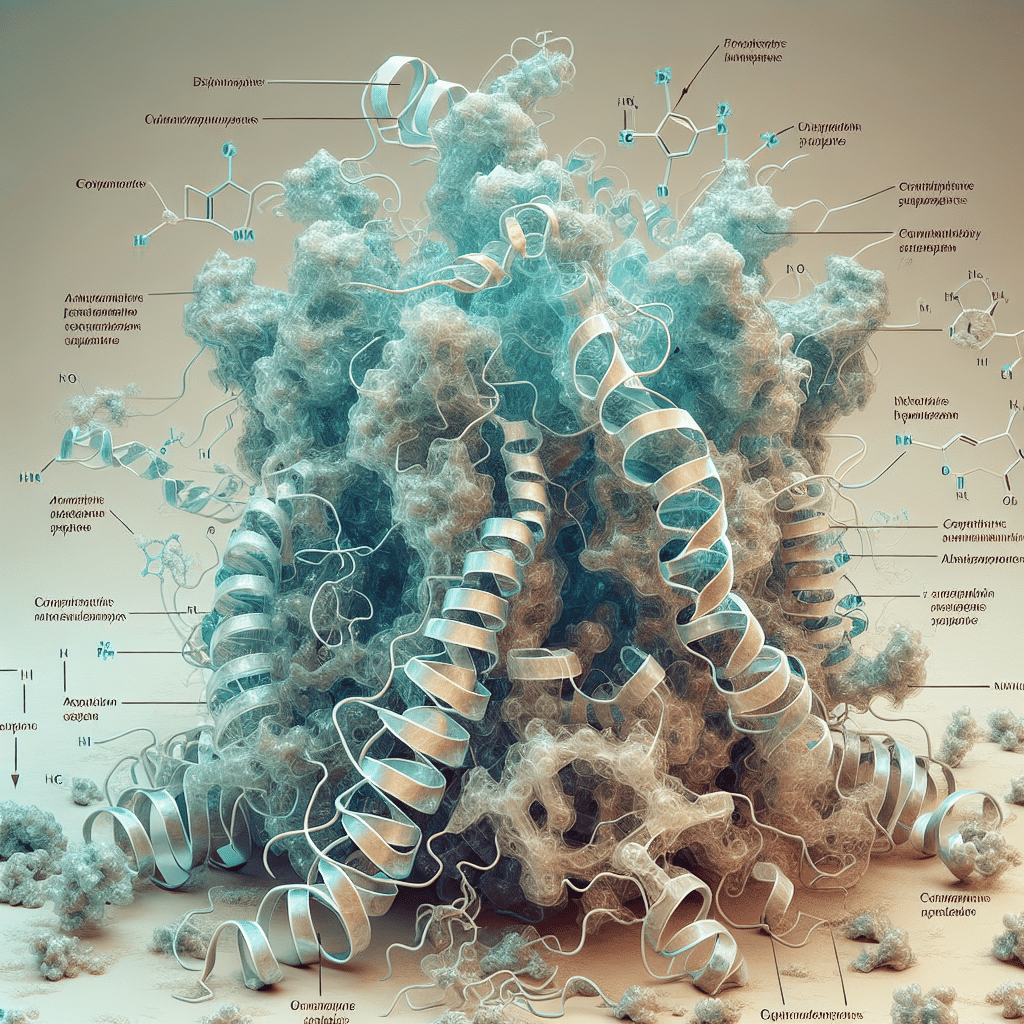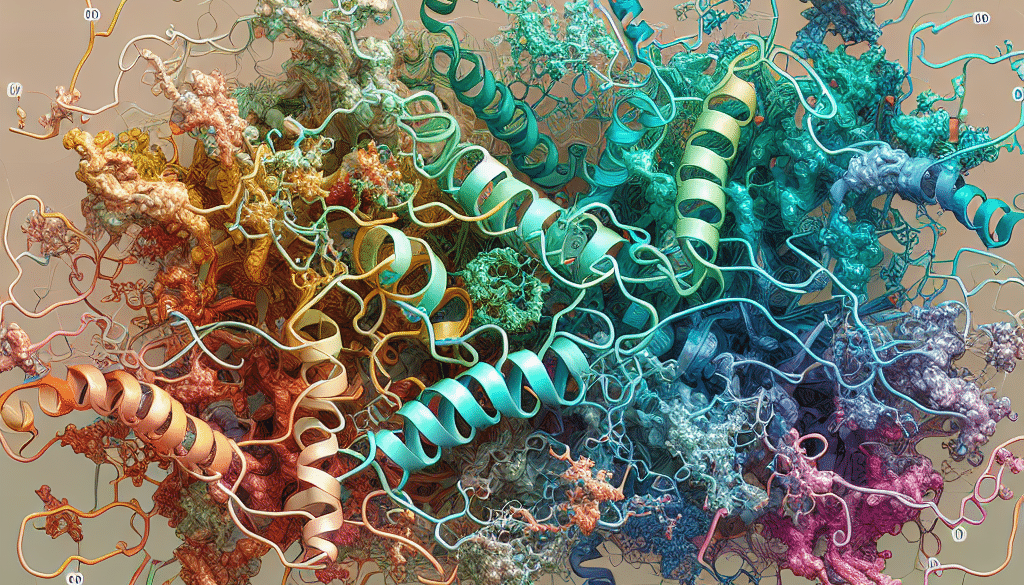14.3.3 Eta Protein: Scientific Insight
-
Table of Contents
- 14.3.3 Eta Protein: Unlocking Scientific Insights and Applications
- Understanding the 14.3.3 Protein Family
- Structural Characteristics of 14.3.3 Eta Protein
- Functional Roles of 14.3.3 Eta Protein
- 14.3.3 Eta Protein in Health and Disease
- Cancer
- Neurodegenerative Diseases
- Autoimmune Diseases
- Therapeutic Potential of Targeting 14.3.3 Eta Protein
- Conclusion: Key Takeaways on 14.3.3 Eta Protein
- Discover ETprotein’s High-Quality Protein Products
14.3.3 Eta Protein: Unlocking Scientific Insights and Applications

The 14.3.3 eta protein is a fascinating molecule that has garnered significant attention in the scientific community. This protein is part of the 14.3.3 family, which plays a crucial role in a wide range of cellular processes. Understanding the 14.3.3 eta protein’s structure, function, and implications in health and disease is essential for advancing medical research and developing new therapeutic strategies. In this article, we delve into the scientific insights surrounding the 14.3.3 eta protein, exploring its biological significance and potential applications.
Understanding the 14.3.3 Protein Family
The 14.3.3 proteins are a family of highly conserved proteins found in all eukaryotic organisms. They are involved in the regulation of various cellular processes, including signal transduction, apoptosis, and cell cycle control. The family consists of several isoforms, each with a unique expression pattern and function. The 14.3.3 eta protein is one such isoform that has been the subject of extensive research due to its involvement in several critical cellular functions.
Structural Characteristics of 14.3.3 Eta Protein
The 14.3.3 eta protein is characterized by its ability to bind to phosphoserine-containing motifs in target proteins. This interaction is mediated by a conserved amphipathic groove present in all 14.3.3 proteins. The eta isoform, like its siblings, functions as a homodimer or heterodimer, allowing it to interact with a diverse range of binding partners. The structural flexibility of 14.3.3 eta enables it to modulate the activity of various signaling pathways by altering the conformation, localization, or stability of its target proteins.
Functional Roles of 14.3.3 Eta Protein
The 14.3.3 eta protein is implicated in numerous cellular functions, some of which include:
- Cell Cycle Regulation: By binding to cyclin-dependent kinases, 14.3.3 eta can influence cell cycle progression and checkpoints.
- Apoptosis: It plays a role in the regulation of apoptosis by interacting with pro-apoptotic and anti-apoptotic factors.
- Signal Transduction: 14.3.3 eta modulates signaling pathways by binding to key signaling molecules, thereby affecting cellular responses to external stimuli.
These functions highlight the importance of 14.3.3 eta in maintaining cellular homeostasis and responding to environmental changes.
14.3.3 Eta Protein in Health and Disease
The dysregulation of 14.3.3 eta protein has been linked to various diseases, including cancer, neurodegenerative disorders, and autoimmune diseases. For instance, overexpression of 14.3.3 eta has been observed in certain types of cancer, suggesting a potential role in tumorigenesis. Conversely, reduced levels of 14.3.3 eta have been associated with the progression of neurodegenerative diseases like Alzheimer’s.
Cancer
In cancer, 14.3.3 eta is thought to contribute to disease progression by inhibiting apoptotic pathways and promoting cell survival. Its interaction with oncogenic signaling proteins can lead to uncontrolled cell proliferation and resistance to chemotherapy.
Neurodegenerative Diseases
In neurodegenerative diseases, the loss of 14.3.3 eta function may result in the accumulation of misfolded proteins and neuronal cell death. Research has shown that 14.3.3 eta can bind to tau, a protein implicated in Alzheimer’s disease, potentially affecting its aggregation and toxicity.
Autoimmune Diseases
Autoimmune diseases like rheumatoid arthritis have also been linked to 14.3.3 eta. The protein’s presence in the synovial fluid of affected joints suggests it may play a role in the inflammatory response characteristic of these conditions.
Therapeutic Potential of Targeting 14.3.3 Eta Protein
The involvement of 14.3.3 eta in various diseases makes it an attractive target for therapeutic intervention. Strategies to modulate the activity of 14.3.3 eta include:
- Small molecule inhibitors that disrupt the protein-protein interactions mediated by 14.3.3 eta.
- Peptide mimetics designed to compete with natural binding partners for 14.3.3 eta binding.
- Gene therapy approaches to modulate the expression levels of 14.3.3 eta in disease states.
These therapeutic strategies are still in the early stages of development, but they hold promise for the treatment of diseases where 14.3.3 eta plays a pivotal role.
Conclusion: Key Takeaways on 14.3.3 Eta Protein
The 14.3.3 eta protein is a critical player in cellular regulation, with implications for health and disease. Its ability to interact with a wide array of proteins allows it to influence various cellular processes, from cell cycle control to apoptosis. The dysregulation of 14.3.3 eta is associated with several diseases, making it a potential target for therapeutic intervention. Ongoing research into the mechanisms of 14.3.3 eta function and its role in disease will continue to shed light on its potential as a biomarker and therapeutic target.
Discover ETprotein’s High-Quality Protein Products
If you’re interested in exploring the world of proteins further, ETprotein offers a range of high-quality protein products suitable for various applications. Whether you’re involved in nutraceuticals, pharmaceuticals, or the food and beverage industry, ETprotein’s offerings can meet your needs. Their products, including organic rice protein, pea protein, and various seed proteins, are characterized by their neutral taste and non-GMO, allergen-free attributes.
ETprotein’s specialization in exporting and delivering tailor-made protein powder and finished nutritional supplements ensures that you receive comprehensive solutions for your protein requirements. Trusted by leading global brands and Fortune 500 companies, ETprotein stands as a testament to China’s reputation in the global protein market.
For more information or to sample their products, please contact ETprotein and email sales(at)ETprotein.com today.
About ETprotein:
ETprotein, a reputable plant protein vegan protein Chinese factory manufacturer and supplier, is renowned for producing, stocking, exporting, and delivering the highest quality organic bulk vegan protein and plant proteins. They include Organic rice protein, clear rice protein, pea protein, clear pea protein, watermelon seed protein, pumpkin seed protein, sunflower seed protein, mung bean protein, peanut protein etc. Their offerings, characterized by a neutral taste, non-GMO, allergen-free attributes, cater to a diverse range of industries. They serve nutraceutical, pharmaceutical, cosmeceutical, veterinary, as well as food and beverage finished product distributors, traders, and manufacturers across Europe, USA, Canada, Australia, Thailand, Japan, Korea, Brazil, and Chile, among others.
ETprotein specialization includes exporting and delivering tailor-made protein powder and finished nutritional supplements. Their extensive product range covers sectors like Food and Beverage, Sports Nutrition, Weight Management, Dietary Supplements, Health and Wellness Products, and Infant Formula, ensuring comprehensive solutions to meet all your protein needs.
As a trusted company by leading global food and beverage brands and Fortune 500 companies, ETprotein reinforces China’s reputation in the global arena. For more information or to sample their products, please contact them and email sales(at)ETprotein.com today.












